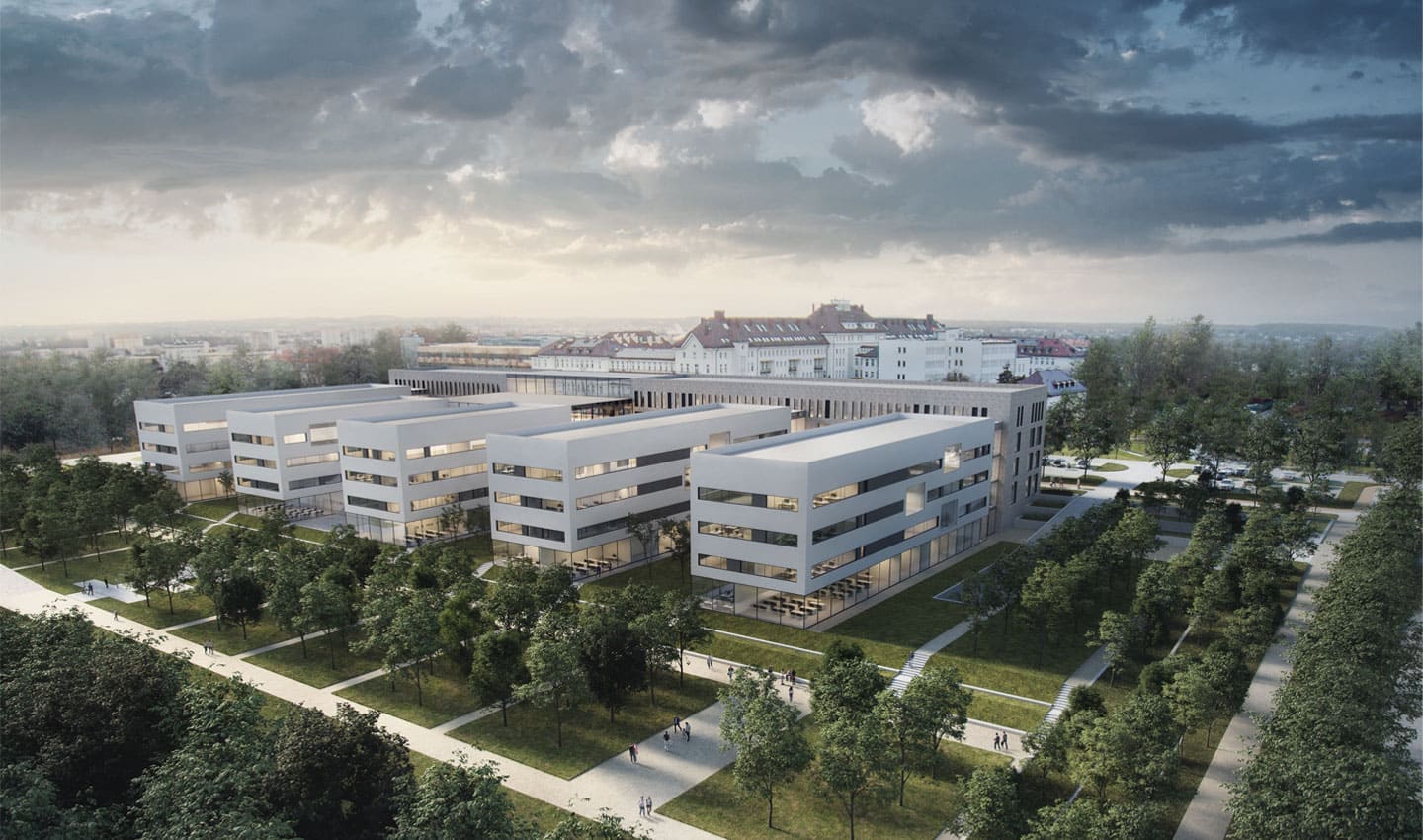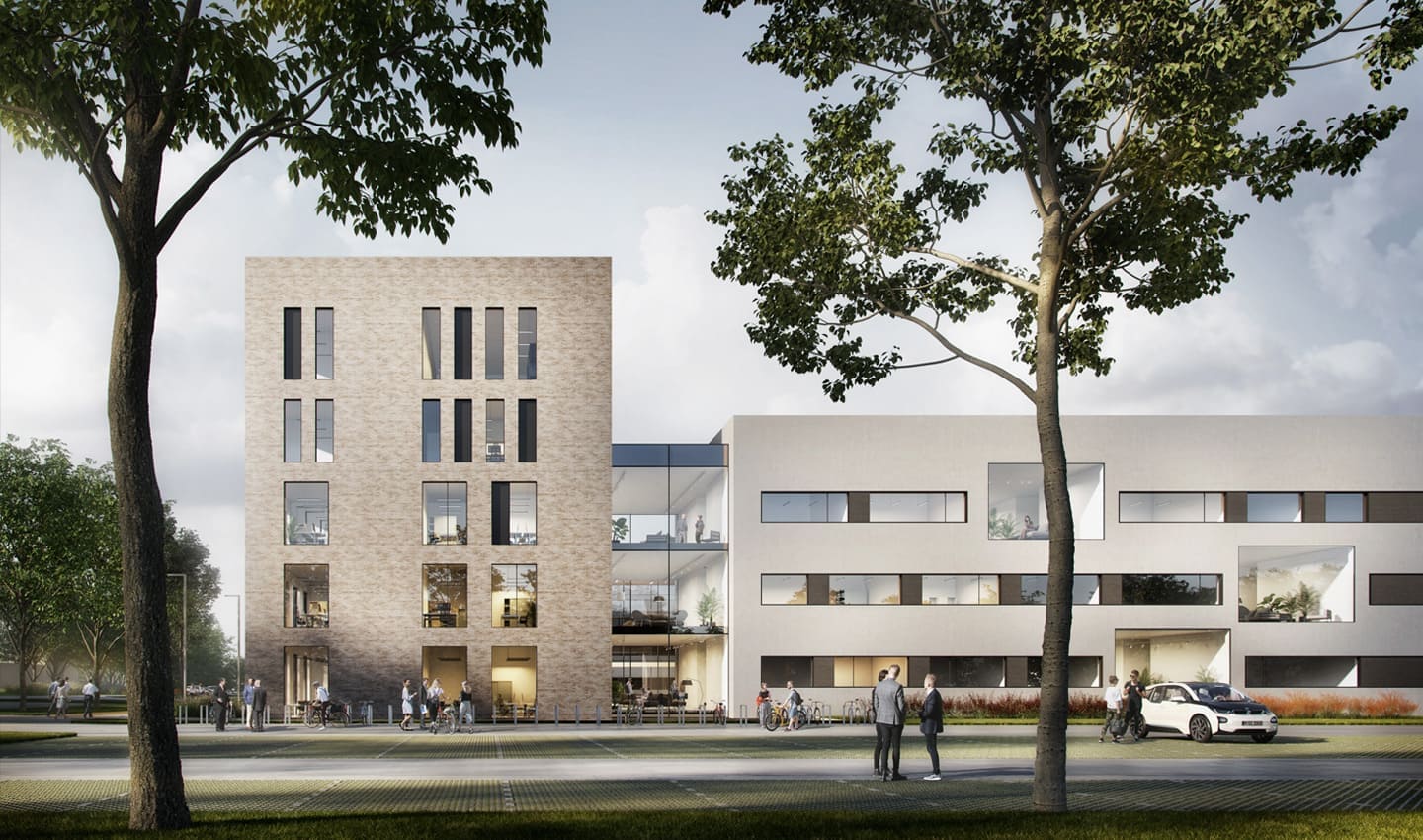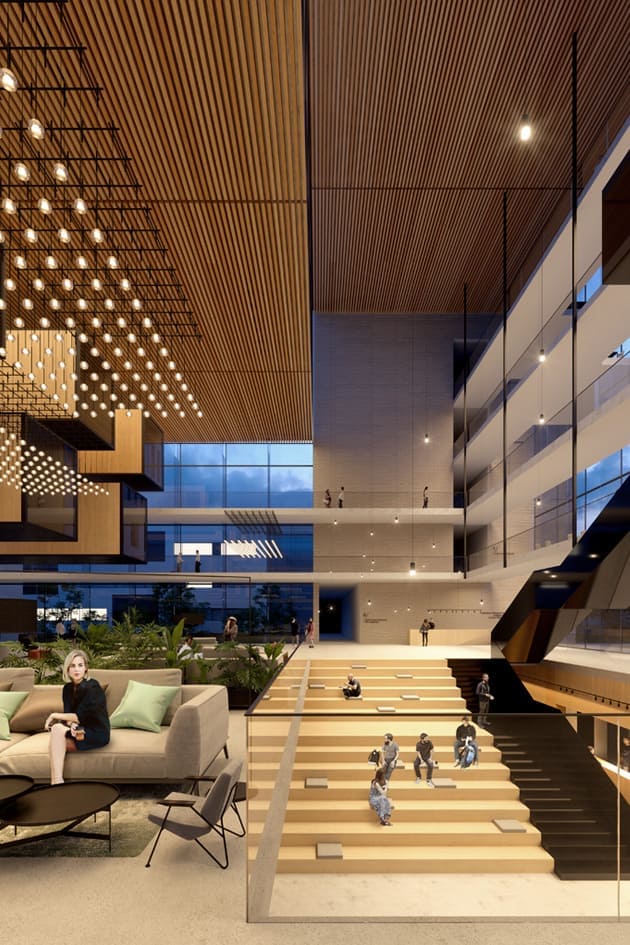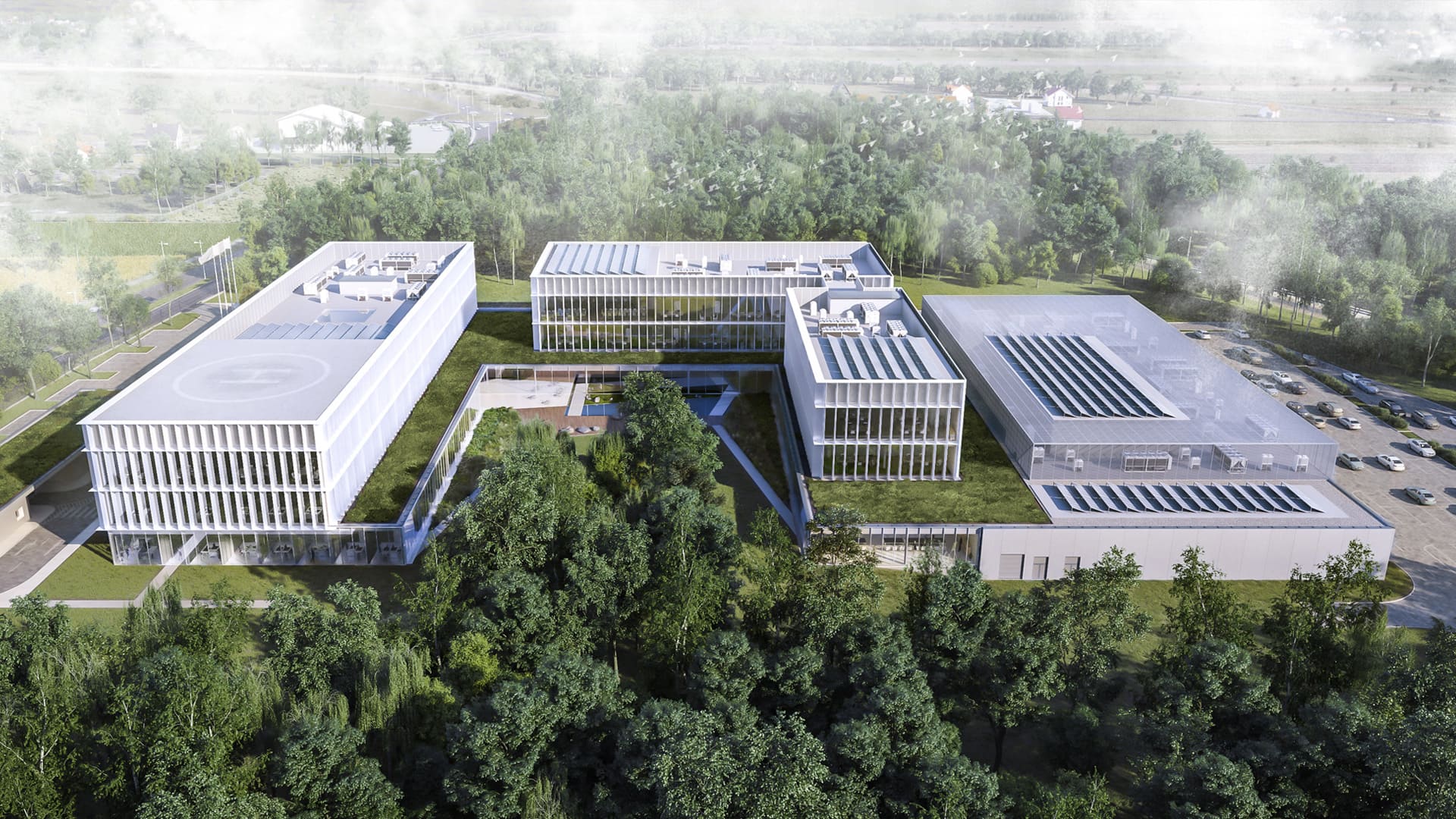We have decided that the design of a new university building at Unii Lubelskiej Street in Szczecin should be developed around reasonable arrangement of functionalities. A major challenge is also to integrate the new building with its surrounding and maintain a unique character of the Pogodno District. By preserving the traditional building style that converges with the local spirit, we intend to create a uniform and harmonious space. The new facility is going to enrich its surrounding while adding to the existing historical development.

Structural elements that comprise the urban surrounding of the site include small detached houses in the east and north, a hospital compound in the west and allotment gardens in the south. The hospital building stands out in the existing built-up structure. Located nearby, Brzozowskiego Street has been developed with detached houses and 3-level residential buildings that follow the Weishaupt’s concept, a concept developed by a pre-war city architect. It is an example of a successful modernist development which separates itself from the past and becomes a recognised piece of architecture and continues to be a desired place to live. Hospital buildings developed after 1945 disregarded the urban and architectural context and significantly changed the previous arrangement.
The site is located in the middle of a historical area. It is beyond a compact city development and the main location of the university campus. The part of Unii Lubelskiej Street near the hospital is rather modest. The street conveys traffic to and from the hospital and houses in the vicinity. It is too narrow and does not correspond well with the size of the hospital and urban structure in Szczecin. From the urban planning point of view, the planned facility is expected to introduce order, fill the gap in the city and counterbalance the unusual shape of the recess after a former open-pit mine.

The formal context of the investment has been set in the “Pogodno – Reymonta” Masterplan. Planned buildings have been designed in line with conditions and requirements specified by the Masterplan. The concept promotes buildings that follow the structure of the pre-war hospital. The width of routes and orderly arranged buildings help to avoid overwhelming massive structures and deep and dark streets. Interiors of buildings are going to establish a pronounced traffic routes, without circumferential corridors and recesses that are troublesome for users. The functional division is pronounced, intuitive and thus friendly to all users. The new development will follow the land configuration at the site. A two-level underground car park will be developed within the envelope of the building, and this will support tall green arrangement in the majority of the site. Posterior wings that are going to be lower than the main building will have their horizontal position. Thus, they will correspond to the land inclination and partially immerse in the recess of the mine pit. Therefore, the new development will not compete with its surrounding and the frontage building will play the role of an acoustic partition.


Once we pass through the boundary of the high-rising glass wall and we are already inside the building, we still maintain our contact with its surrounding. Behind our back, we have the “old” hospital and we can see light-colour sides of the building through the glass wall in front of us. The main hall extends up to the height of the 5th level, and it is 36 m wide and 18 m deep. Regardless time of a day, its space is bathed in sunlight. In the morning, the sunlight enters through the glass façade in the east and through the front glazing in the west in the afternoon. The flooring of the main hall is the extension of the outer yard. To the left of the hall, we can see black, delicate and elegant stairs that seem suspended in space and provide access to consecutive floors. At every floor, close to the glass frontal wall, a user can enter balcony-like platforms with places to sit and view the hospital on the opposite side of the street. The background for black flight of stairs leading to upper galleries is grey-beige brick wall which look familiar if we enter the building from Unii Lubelskiej Street. The identical wall on the opposite side, right of the entrance, provides a backdrop for the reception desk. If we look up, we can see eight capsules suspended in the hall. These are multimedia quiet rooms for work. Apart from their appealing functionality (e.g. possibility to follow “on line” lectures all over the world, we have quiet space for our individual work etc.). They fill the lower space of the main hall and offer further integration opportunity for users. Right below, we have the glazed common space with access to a large terrace and a panoramic (eastward) view of Szczecin. This part is lower and more cosy than the main hall.

Right opposite the main reception, we can see a regular, rectangular opening in the ground floor and self-standing elegant balusters surrounding a wide imposing staircase leading downward to the auditorium. The latter is the most important and the largest lecture hall in the campus. The stairs are made of wood which adds some warmth to the cold light floor in the main hall and invite to rest while waiting for another lecture. A nice surprise awaits us while going down the stairs to the main auditorium. We first reach a large spacious ground floor hall right in front of the auditorium. Additional light is provided by glazed back walls. The east-west positioning of the auditorium also contributes to the revitalization of the urban development. The interesting solution for the representative space in the building is based on adjustment to the elevation differences between Unii Lubelskiej Street and the bottom of the mine pit recess.

The egalitarian structure of the university avoids a hierarchical order a series of components with more important placed loser and less important ones further. Due to the scale of the developed common space each component is equally unique and important. The location in space does not result from the hierarchy, but instead, it is synonymous with autonomy and synergy – oneness in grandiose. The effect has been enhanced by common functions developed at the ground floor along Unii Lubelskiej Street, including seminar rooms and a cafeteria. The hall has been used to organize the entire space, since it allows to expand the structure horizontally and vertically. Specific departments have been spaced proportionally with direct links to stairwells and lift shafts. The latter and specific groups of rooms follow a hub and spoke arrangement.
The design puts a particular emphasis on social integration. With this respect, the key role in the design is placed by what is called an “integration node”, or common space arrange to promote contact between various groups. On the urban scale, or more specifically at the level of the district of Pogodno, a green area accessible for citizens creates an opportunity for integration. It is a new park that includes an imposing slope in its southern part.


